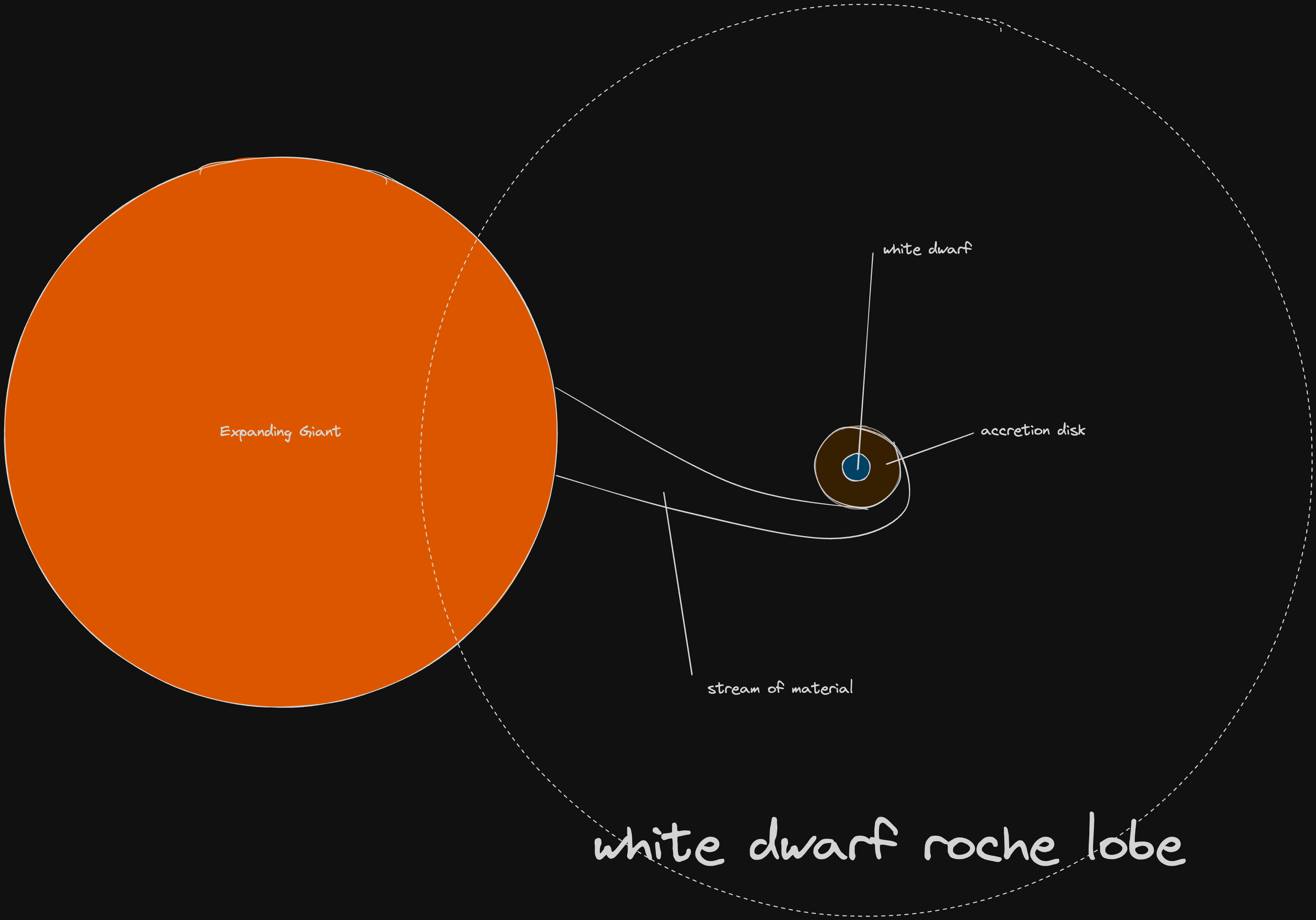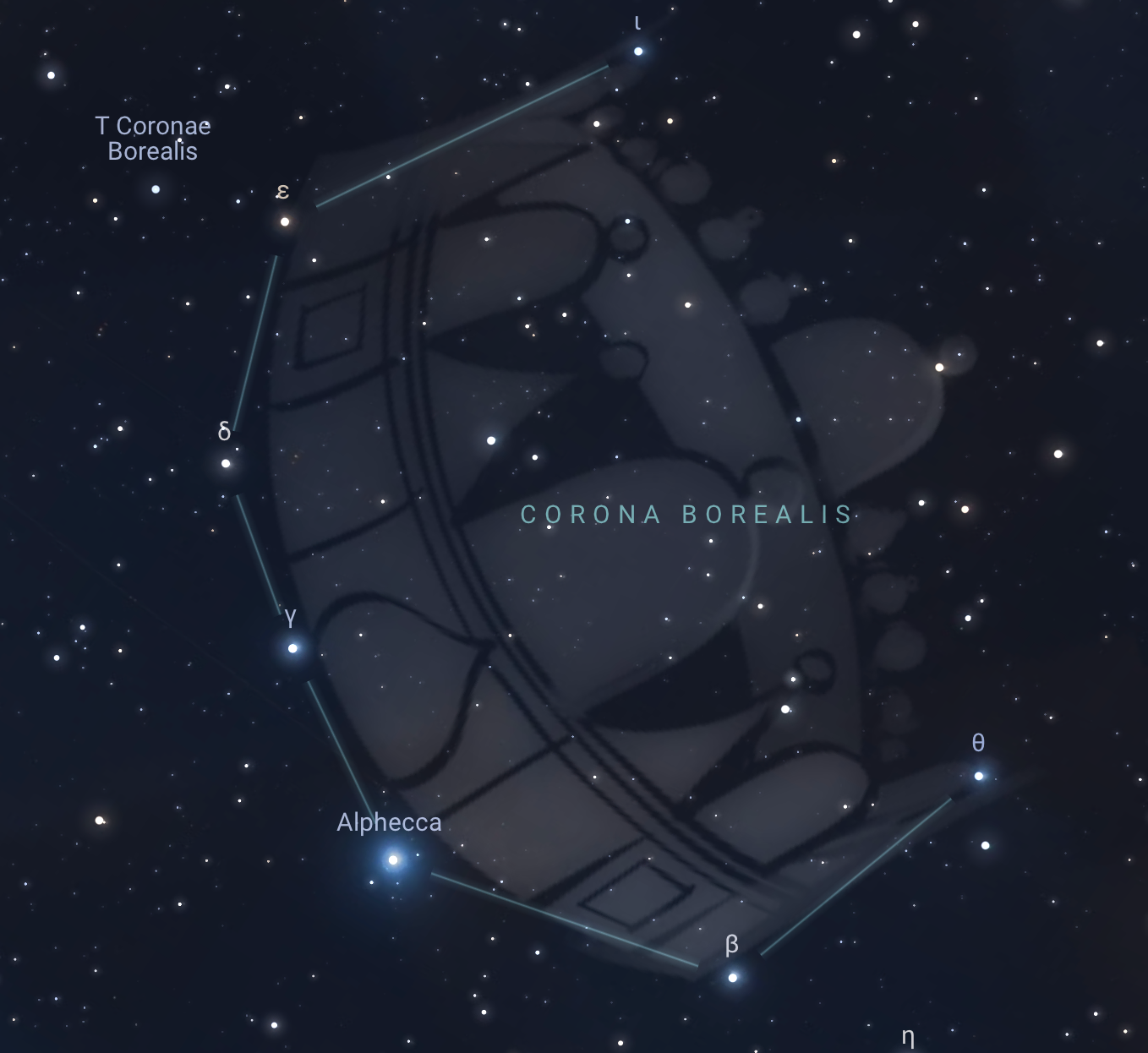Novae are the younger cousins to supernovae, where a star runs out of fissile material and blows itself up in a fleeting attempt to fuse iron. Instead, during a nova event, material accretes around a dense object (usually a white dwarf), leading to periodic ‘pulses’ during which the mass of the accreted layer on the white dwarf is sufficient to begin fusion. The outer layer fuses, leading to the star expanding for a brief moment - then it shrinks back.
To accrete mass, the white dwarf has to have a large companion to do so; most of these stars are therefore binary star systems. The system starts its life as two main-sequence stars, one more massive than the other. The more massive star ends its life early, becoming a white dwarf. If the orbits of the two stars are close enough, when the less massive companion enters the red giant stage, the white dwarf’s gravitational pull on its outer layers will far exceed its own, leading to the accretion of matter around the dwarf.

In the short-term, most novae are periodic; their ‘flare-ups’ - increases in brightness - occur semi-regularly as the rate of accretion remains constant. The expansion of the star is best measured in timescales of thousands of years, making it insignificant to the human observer! We call these periodic novae recurrent!
This brings us to our target star system this year - T Coronae Borealis! A recurrent nova with its nature first catalogued in 1866, the roughly 80-year pulsation period of the star is a true once-in-a-lifetime event, brightening from a paltry magnitude of 10.2 to 2.5 - a roughly 600-fold increase in brightness. That magnitude puts the star in the visible range. This nova’ll only last for a week or so - so keep your eyes peeled!
Coronae Borealis is an often-overlooked constellation in the Northern Sky; a small, somewhat dim constellation nested between Boötes and Heracles, it isn’t typically on the amateur astronomer’s radar. The constellation does have a great number of variable stars, such as the eminent R Coronae Borealis, also a pulsating star. T Corona Borealis is located close to the south of Epsilon Coronae Borealis, one of the six main stars of the constellation:

To anyone hoping to observe this event, I bid you cloudless skies! Though it’ll appear like a normal star during hte nova, bring a starchart - you’re going to notice it!